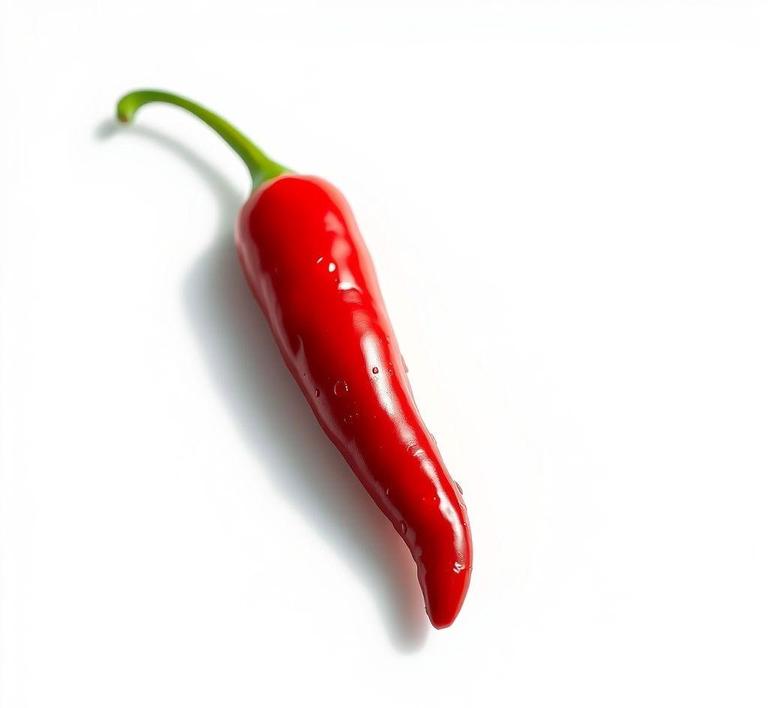Refreezing chili can be a bit tricky, but with the right knowledge, it’s totally doable! Many people wonder if it’s safe to refreeze chili once it’s been thawed, and the good news is, you can-if you follow some important guidelines. The key is to make sure the chili is cooled down properly before refreezing it, and that it hasn’t been left at room temperature for too long. In this guide, we’ll walk you through the do’s and don’ts of refreezing chili, tips on maintaining its flavor and texture, and how to store it safely for later enjoyment.
Can You Refreeze Chili?

Refreezing chili, or any prepared dish, is a bit of a controversial subject in the culinary world. Generally speaking, yes, you can refreeze chili, but there are some critical considerations to keep in mind before doing so. Chili is made up of a hearty mixture of ingredients-beans, meat, vegetables, spices, and often a sauce-which are perfectly suited for freezing in the first place. The real question is whether refreezing chili will maintain its safety, flavor, and texture.
When you freeze chili for the first time, the cooling process halts bacterial growth, effectively preserving the chili until you’re ready to thaw and reheat it. However, refreezing chili that has already been thawed introduces a few challenges. The key issues to think about are food safety, texture, and flavor.
From a food safety perspective, the main concern with refreezing chili is the risk of bacterial growth. When chili is thawed, it enters a ‘danger zone’ temperature range (typically between 40°F and 140°F or 4°C to 60°C), which is when bacteria can multiply quickly. If the chili has been left out too long or has been thawed at room temperature, it may not be safe to refreeze. If the chili was safely refrigerated or frozen right after being thawed and hasn’t been left at unsafe temperatures, it should be fine for a second freezing.
How To Refreeze Chili?
Refreezing chili is a straightforward process, but there are a few important guidelines to follow to ensure the best results and safety:
- Cool the Chili Before Freezing: If you’re planning to refreeze chili, make sure it cools down thoroughly before doing so. Avoid leaving it at room temperature for more than two hours, as that can lead to the growth of harmful bacteria. A good rule of thumb is to let it cool down to room temperature and then place it in the refrigerator until it’s completely chilled, ideally within an hour or two.
- Divide Into Portions: When you first freeze chili, it’s a great idea to portion it into smaller servings. This way, you can thaw only what you need. When refreezing, it’s even more important to do this to ensure that the chili doesn’t sit in the freezer for extended periods, and so you can easily control portion sizes when thawing later. You can use freezer bags or containers that are designed for freezing, ensuring that you expel as much air as possible to reduce freezer burn.
- Ensure Proper Storage: Chili should be stored in airtight containers or heavy-duty freezer bags. If you’re using containers, make sure there’s at least half an inch of space at the top of the container to allow for the chili to expand slightly as it freezes. Avoid using containers that aren’t designed for the freezer, as they may crack or leak during freezing.
- Thaw Correctly: When you’re ready to use the refrozen chili, it’s essential to thaw it safely. The best method is to place the frozen chili in the fridge for 24 hours before reheating. If you’re short on time, you can also defrost it in the microwave, though this might impact texture slightly. Reheating chili on the stove after it’s thawed is often the best way to bring it back to life-just make sure it reaches a full boil to ensure it’s safe to eat.
Quality Impact
While it is safe to refreeze chili as long as the appropriate precautions are followed, the quality of the dish may suffer slightly. The impact of refreezing on chili can be divided into three main areas: texture, flavor, and appearance.
- Texture: The most significant change when refreezing chili is in the texture of the ingredients. Beans, for instance, can become mushy after being frozen and thawed multiple times. The meat may also lose some of its original tenderness and might become a bit dry or stringy, particularly if it’s ground beef or pork. Vegetables can soften and lose their crispness as well. Chili that has been refrozen may not have the same satisfying bite as it would fresh or freshly frozen.
- Flavor: While the flavors of chili should generally hold up well after being refrozen, the overall taste may not be quite as vibrant. Some spices and seasonings can degrade during the freezing and thawing process, and repeated freezing can cause subtle changes in the balance of flavors. In addition, the longer chili sits in the freezer, the more likely it is to develop freezer burn, which can introduce off-flavors. However, this is largely mitigated by proper storage techniques.
- Appearance: The visual appeal of refrozen chili is often the least affected, although there may be slight changes. For example, chili that contains a significant amount of liquid (like broth or tomato base) can sometimes become watery after thawing, which can change the dish’s consistency. The appearance of the chili may become a bit more separated, with the liquid and solid components no longer holding together as well as they originally did.
In short, while the quality of the chili may not be quite as good as the first freeze, it will still be perfectly edible and safe to eat if done correctly. If you’re hoping to maintain the original texture and flavor, you may want to limit refreezing to one round and use it within a reasonable time frame.
To sum it up, refreezing chili is possible, but it comes with certain considerations. If you’ve thawed chili safely and it has not been left in the danger zone for too long, refreezing is perfectly fine. However, the quality of the chili may not be as high after being refrozen, especially in terms of texture and flavor. Beans and vegetables may lose some of their original texture, and the flavors may become a little less vibrant.
The key to refreezing chili successfully is proper handling: ensure the chili cools quickly, portion it before freezing, store it in airtight containers, and follow safe thawing and reheating practices. By following these guidelines, you can still enjoy your chili after refreezing without compromising too much on its safety or taste.
Is It Safe To Refreeze Chili?
Refreezing chili is a common question that arises when we cook in large batches or have leftovers that we don’t want to go to waste. The safety of refreezing chili depends on how it was originally frozen, how it’s been handled since cooking, and the way it’s reheated. Let’s break it down:
When chili is first cooked, it’s safe to freeze it right away. The key to refreezing chili safely lies in the timing and the method of thawing. If the chili has been allowed to thaw properly in the fridge or via the microwave, then refreezing it is generally safe, provided you haven’t let it sit at room temperature for extended periods (which can promote bacterial growth). Refreezing chili that’s been partially or completely thawed, and then left out for more than two hours, can lead to a higher risk of foodborne illnesses.
The reason refreezing can be tricky, however, is due to the risk of degradation in quality. Each time chili is frozen and thawed, moisture is lost, which can result in changes in texture. The consistency of the beans, meat, and spices might suffer, leading to a less appetizing dish when reheated. However, from a safety standpoint, the risk of harmful bacteria growth can be minimized if the chili has been properly handled at every stage, maintaining safe temperatures (below 40°F/4°C) during both thawing and refreezing.
Signs That Chili Should Not Be Refrozen
Refreezing chili can be a practical way to extend its shelf life, but there are certain signs you should watch for to determine if it’s no longer safe to refreeze:
- Unusual Odor: A sour or off-putting smell is the most obvious sign that the chili has gone bad. This could mean that harmful bacteria have begun to grow, especially if it was left out too long or not properly refrigerated. Always give your chili a good sniff before deciding to refreeze it.
- Changes in Color: While it’s normal for chili to darken slightly when frozen, drastic color changes-such as a greenish or grayish hue-are a red flag. This could indicate oxidation or bacterial contamination, making it unsafe to refreeze.
- Visible Mold: Any sign of mold on the surface of your chili means it should be discarded immediately. Mold thrives in moist environments, and chili is a perfect breeding ground if left improperly stored or refrozen.
- Water or Ice Crystals: If you notice excessive ice crystals or an odd watery layer when thawing the chili, this might suggest that the chili was improperly frozen or stored. Refreezing chili with excessive ice could lead to further texture degradation, making it mushy or watery when reheated.
- Room Temperature Exposure: If your chili has been left at room temperature for more than two hours, it’s best not to refreeze it. Bacteria can grow rapidly at room temperature, increasing the risk of foodborne illness. This is especially important if the chili has been sitting out during a party or meal and then refrozen.
- Separation of Liquids: If, when thawed, your chili shows an abnormal amount of liquid separation (more than usual), this could indicate that it’s been through too many freeze-thaw cycles or was not stored properly to begin with.
Common Refreezing Mistakes
When it comes to refreezing chili, there are several common mistakes that can impact both the safety and quality of the dish. Avoid these missteps to make sure your chili remains as delicious as possible:
- Freezing Too Late: One of the biggest mistakes is not freezing chili soon enough after it’s been cooked. Chili should be cooled quickly and frozen within two hours of cooking. If it sits out for too long, harmful bacteria can develop. Use shallow containers for faster cooling, and avoid letting it sit on the counter.
- Thawing Incorrectly: Thawing chili improperly can lead to a mushy texture or uneven reheating. Never thaw chili at room temperature for extended periods. The safest methods are to thaw it overnight in the fridge or use the defrost function on your microwave. Thawing chili on the counter can allow harmful bacteria to thrive.
- Refreezing After Partial Thawing: Refreezing chili that has been partially thawed but then left at room temperature is a bad idea. Even if the chili is still cold to the touch, bacterial growth could have already begun. Always make sure the chili is fully reheated or consumed before considering refreezing it.
- Freezing in Large Portions: It can be tempting to freeze chili in one giant container, but this can make it difficult to reheat evenly and safely. Freezing smaller portions helps ensure you can take out only what you need and avoid multiple freeze-thaw cycles.
- Not Labeling Containers: If you don’t label your frozen chili with dates and contents, it can be easy to forget how long it’s been in the freezer. Freezing chili for too long-typically beyond 3-4 months-can result in a decline in flavor and texture. Always label your containers with the date of freezing.
- Not Using Airtight Containers: Using improperly sealed or airtight containers can lead to freezer burn, which not only affects the texture but also the flavor of your chili. Ensure your container is tightly sealed to protect it from moisture loss and air exposure.
Tips And Tricks
Refreezing chili might be a bit of an art, but with the right tips, you can avoid potential issues:
- Cool Chili Quickly: To prevent bacteria growth, cool chili quickly before freezing. Spread it in shallow containers or place the pot in an ice bath to bring down the temperature before storing it.
- Use Portion-Control Containers: Freeze chili in single-serve or meal-sized portions. This way, you only defrost what you need and avoid having to refreeze any leftovers.
- Add Fresh Ingredients When Reheating: If you’ve noticed that your chili has lost some of its original flavor after being frozen and reheated, consider adding fresh ingredients like chopped onions, garlic, or a squeeze of lime when reheating to brighten it up.
- Use the Right Freezer Bags: If you’re freezing chili in bags, make sure to use freezer-grade bags rather than regular plastic bags. They provide a better seal against air and moisture and help prevent freezer burn.
- Reheat Gently: When reheating chili, do it slowly over low heat. Stir occasionally to ensure even heating. If you’re microwaving, heat it in intervals and stir after each one to prevent hotspots.
- Freeze with Extras: If you know you’re making chili for later freezing, consider adding a bit extra seasoning or chili base before freezing. Sometimes, the flavor can lose a bit of its punch after freezing, so a little extra seasoning can help restore it.
Conclusion
While refreezing chili is safe under certain conditions, it requires careful attention to detail to preserve both safety and quality. As long as the chili has been handled correctly, thawed properly, and refrozen quickly, it can be refrozen for a second round of enjoyment. Always look out for signs that the chili has spoiled, avoid common mistakes like improper thawing, and take steps to ensure that you’re preserving its flavor and texture. With a little effort, refreezing chili can become a convenient way to save leftovers without compromising the deliciousness of this hearty dish.


